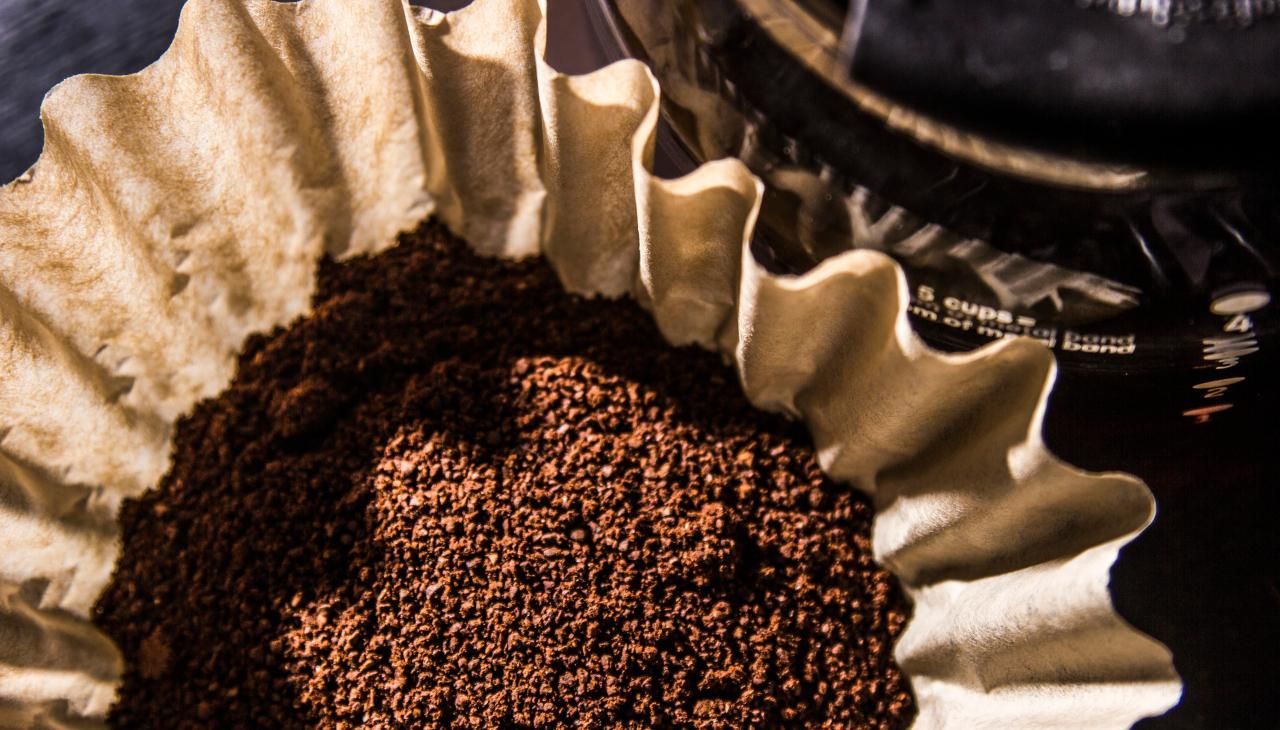

RyanJLane / E+ / Getty Images
For coffee drinkers, there’s really nothing more terrifying than the thought of waking up one morning and being all out of java. One way to ensure that never happens is to sign up for a coffee subscription service. This not only keeps you well-stocked, but it also gives you the opportunity to sample some high-quality and organic coffee beans from around the world.
Of course, like any eco-friendly meal kit service, a coffee subscription box should match your own preferences while also being good for people and the planet. You can now get a subscription for almost anything, including vitamin subscription services and eco-friendly cleaning products. Why not add coffee to your list? In this article, we’ll take a closer look at some of the top organic and specialty coffee subscription options on the market today.
Our Picks for the Top Coffee Subscriptions
Each product featured here has been independently selected by the writer. You can learn more about our review methodology here. If you make a purchase using the links included, we may earn commission.
- Best Organic Coffee – Purity Coffee
- Best Keto Coffee – Bulletproof Coffee
- Best Subscription – Yes Plz Coffee
- Best Coffee Selection – Angels’ Cup
- Best Carbon-Free Coffee – Grounds for Change
- Best B Corp Coffee – Conscious Coffee
- Best for International Coffees – Atlas Coffee Club
- Best for Specialty Coffees – Bean Box
- Best for Artisan Coffees – Mistobox
- Most Eco-Friendly – Driftaway Coffee
- Best Variety of Brews – Blue Bottle Coffee
- Most Affordable – Peet’s Coffee
- Best for Home and Office – Crema Coffee
How We Chose the Best Coffee Subscriptions

Min Kim / Getty Images
Before we get into specific recommendations, it may be helpful to note some of the criteria we used for making our assessment. Our ranking factors include:
Coffee Selection
Some subscription services do a better job than others of giving coffee lovers lots of options, not only allowing you to pick between different beans, but also allowing you to pick from whole bean vs. ground coffee. We also gave bonus points to subscription services that provide freshly-roasted craft coffee.
Subscription Options
Another important consideration is how much flexibility you have in your actual subscription. We love services that give you some choice in how much coffee you actually need, how often you wish to receive your next box, and the ability to try new flavors.
USDA Organic/Fair Trade/Rainforest Alliance Certifications
Many coffee drinkers will want to verify that their purchase is Fair Trade and/or USDA organic certified. We looked for the best coffee subscriptions that make the environment and the people that grow their coffee a priority in sourcing. If they didn’t have these certifications, we looked to see if they explained how they approached their sourcing instead.
Single-Origin Coffee
A lot of enthusiasts prefer single-origin coffee; that is, coffee made exclusively from beans grown in one specific geographic area. Single-origin coffee tends to provide unique characteristics and flavor notes that blended coffees cannot match.
Sustainability
If you’re looking to minimize your environmental footprint then you’ll definitely want to account for the sustainability practices of each subscription service. This can encompass the service’s supply chain, production, packaging, and shipping.
Pricing
Naturally, one of the deciding factors in your organic coffee or healthy energy drink subscription will be the price. Some subscriptions are more budget-friendly than others. We tried to select subscription options that that are affordable and still offer subscribers amazing coffee they can’t find at the grocery store.
Our 13 Favorite Organic and Specialty Coffee Subscriptions
Best Organic Coffee: Purity Coffee

puritycoffee.com
Purity Coffee claims that their process maximizes the health benefits naturally found in coffee. They only use 100% USDA-certified organic coffee beans for all of their coffees. These are then screened for pesticides and molds, and then roasted using a special smokeless roasting process to ensure it contains the highest-possible levels of antioxidants. Subscribers can save on each order, and prepaid subscriptions receive free shipping.
Why buy: Not only is Purity Coffee 100% organic, it’s also sustainably sourced. They offer several specialty Founders’ Roasts that are Rainforest Alliance-certified and Smithsonian Bird Friendly-certified for the grower’s commitment to biodiversity and habitat conservation.
Best Keto Coffee: Bulletproof Coffee

bulletproof.com
Bulletproof Coffee is a keto coffee, or butter coffee, that contains both high-quality coffee and good fats to provide even more fuel to your mornings. It’s meant to replace carb and sugar-heavy breakfasts while giving you what you need to get going. Bulletproof Coffee uses Rainforest Alliance-certified beans grown in direct partnership with farmers on high-altitude estates in Guatemala and Colombia. With their subscription option you can save 10% on each order, and receive free shipping on orders over .
Why buy: Not only can Bulletproof Coffee change the way you start your day with a keto-friendly cup of coffee, but the coffee itself is grown using sustainable methods, is sustainably washed and mechanically dried, and then thoroughly tested for toxins and impurities.
Best Subscription: Yes Plz Coffee

yesplz.coffee
Yes Plz Coffee offers a coffee subscription service that delivers a new and unique blend every single week. You can choose the size and schedule of your deliveries, including an 8.8 oz or 12 oz package delivered every week, every two weeks, every three weeks, or once a month. They source their coffee beans from smaller importers who prioritize transparency and relationships with their growers and millers.
Why buy: We love that Yes Plz Coffee offers so many different subscription options to fit your schedule, and that they can provide a unique roast each and every week. This is a great way to experience a new, expertly roasted coffee every week, or every month, that you can cancel any time.
Best Coffee Selection: Angels’ Cup

angelscup.com
If you’re just getting into serious coffee consumption, or want to dip your toes into the subscription model, Angels’ Cup is an excellent starting point. You can begin by getting just a single 12 ounce bag of coffee, and they also offer blind sampler packs and subscriptions with different frequency levels, including weekly, twice monthly, or monthly. Their mobile app will help you discover the different tasting notes to find your favorites.
Why buy: There’s a lot of flexibility built into the Angels’ Cup model, making it an ideal choice for those who are new to the gourmet coffee scene. While they don’t source the coffees themselves, they do work with roasters who pay well-above Fair Trade prices.
Best Carbon-Free Coffee: Grounds for Change

groundsforchange.com
Grounds for Change has a reputation for being one of the most progressive, stewardship-minded coffee companies out there. If you’re looking for Fair Trade, organic, and/or carbon-free options, this certified B corp is where you can find them. They also showcase a lot of unique collections, from single-origin coffees to some enticing decaf options, that are well worth investigating. We’re more than happy to include Grounds for Change on our list.
Why buy: In terms of social responsibility, Grounds for Change can’t be topped. They are the only company on our list that offers carbon-free coffee, meaning they offset 100% of the emissions from their coffees.
Best B Corp Coffee: Conscious Coffees

consciouscoffees.com
Conscious Coffees has made some really admirable investments in coffee-growing communities across the world. Their model of sustainability and corporate responsibility is commendable, but they are equally passionate about exquisite roasting. They belong on our list for these reasons and so many more, including their emphasis on 100 percent organic coffee, small-batch freshness, and sustainable sourcing.
Why buy: Conscious Coffees sets a high bar for stewardship and responsibility. We strongly recommend them to anyone who wants to invest in sustainable coffee-farming across the world.
Best for International Coffees: Atlas Coffee Club

atlascoffeeclub.com
One of the many reasons to consider a subscription coffee service is that it will give you a chance to explore different flavors from around the world. And there is no subscription service that serves up international variety quite like Atlas Coffee Club. Each month, you’ll get a new coffee from a different country like Costa Rica, Colombia, or Ethiopia, in a bag that’s modeled after indigenous textiles or local landscapes. For anyone who loves to travel or simply likes to try new things, Atlas Coffee Club offers a truly transportive experience.
Why buy: There’s no better option for trying out different coffee flavors from across cultures. The company also pays well above market prices to growers to support ethically sustainable farming practices.
Best for Specialty Coffees: Bean Box

beanbox.com
Bean Box is another outstanding choice for java enthusiasts who are curious to sample different tastes. Based in Seattle, Bean Box partners with different coffee roasters who specialize in single-origin coffees and coffee blends from around the world, including Africa, South America, and more. They’ll send you a different blend each month, allowing you to develop a really broad and sophisticated palette. We also really love the price point on this one, which offers a great value.
Why buy: If you’re looking for a budget-friendly way to sample specialty coffees, Bean Box is a great coffee subscription service to consider.
Best for Artisan Coffees: Mistobox

mistobox.com
If you’re attempting to maximize your coffee variety, you’ll probably be over the moon about Mistobox. This coffee subscription company boasts partnerships with more than 50 roasters across the world, which is all but unparalleled. We also recommend them due to their commitment to Fair Trade and ecologically sustainable practices. Mistobox has a coffee curation service that will help you determine just where to start. So, if you feel overwhelmed by all the different organic coffee options, Mistobox has you covered.
Why buy: We recommend Mistobox for their sustainability, their corporate citizenship, their sheer variety of organic coffees, and their curation options.
Most Eco-Friendly: Driftaway Coffee

driftaway.coffee
With Driftaway Coffee, the name of the game is personalization. Their service will actually enable you to establish “coffee profiles,” pinpointing your tastes and helping them determine exactly what to send you each month. As if that weren’t enough, Driftaway guarantees single-source whole bean coffees, and they also do an exemplary job of providing compostable packaging. Finally, they have a sustainability program that supports regional farmers.
Why buy: A great pick for single-origin whole bean coffee, and also a really great model for sustainability within the single-origin coffee subscription vertical.
Best Variety of Brews: Blue Bottle Coffee

bluebottlecoffee.com
If you really want your coffee to be as fresh as can be, then we heartily recommend Blue Bottle Coffee. They ship everything within 48 hours of roasting, ensuring you get the most vibrant flavors. Another thing we’ll mention about this organic coffee subscription service is that they provide a lot of different options for espresso, decaf, single-origin, and blended coffees. There’s definitely a lot to like here, especially if you’re keen on small-batch coffee.
Why buy: For fresh flavors and plenty of variety, Blue Bottle Coffee is a great choice. The majority of their coffees are certified organic, and they pay at least Fair Trade prices to growers, often more.
Most Affordable: Peet’s Coffee

peets.com
Peet’s Coffee has a ton of great products to consider, including some eclectic subscription options. You can take your pick between their small batch series, single-origin coffees, signature blends, and beyond. What’s more, they boast plenty of flexibility with scheduling, making it easy to get coffee exactly when you need it. Plus they offer free shipping on coffee subscriptions.
Why buy: Peet’s is an outstanding choice for anyone seeking plenty of variety and built-in flexibility. You may recognize them from the grocery store, but this brand is seriously committed to responsible sourcing, support for local farmers, and energy-efficient roasting.
Best for Homes and Offices: Crema Coffee

crema.co
Crema Coffee is a popular choice among coffee connoisseurs, and it’s not hard to understand why. There are over 450 coffees to choose from, spanning roasters located all over the world. You can customize your subscription to make certain you only get the roasts you’re really going to be into, and you can even rate coffees to help keep track of your tastes. Crema Coffee offers subscription packages for your household and for your workplace.
Why buy: Crema Coffee offers incredible variety, plenty of options for personalization, and even a subscription model for your office. They ensure that they only work with roasters committed to an ethical coffee supply chain.
How Does a Coffee Subscription Work?

amenic181 / iStock / Getty Images Plus
Clearly, there are plenty of options to choose from as you seek a subscription-based coffee delivery service. But if you’re new to this whole concept, you may have some lingering questions about precisely what you can expect from your coffee subscription.
First of all, keep in mind that these subscriptions, like ones you can get for eco-friendly laundry detergent subscriptions, all work a little bit differently. Most of the companies on our list offer a coffee of the month club and provide different coffees to try with each delivery.
For a general overview of the coffee subscription process, though, you can typically expect something a bit like this:
Select the Type of Subscription You Want
Are you looking to get just a sampler of coffee beans each month? Or do you want to stay well-supplied, with new coffees arriving more frequently? Choosing your preferred subscription model is usually the first step.
Choose What Kind of Coffee You Want
Different subscription services will allow you different levels of customization, but there is always some way of indicating your preferences, whether you like dark roasts over light roasts, single-origin coffees over blends, etc.
Get Coffee Delivered to You
Most coffee subscription services will box your coffee in recyclable/compostable materials and deliver right to your front door. Because it’s so important to maintain freshness, most subscription companies ship within a day or two of roasting.
Prepare Your Coffee
Note that, with whole bean options, you’ll actually need a grinder to grind your coffee; if you choose ground coffee, then it will be ready to brew as soon as it shows up at your door.
Try New Types of Coffee
Finally, note that subscription coffee companies tend to rotate their roaster throughout the year. Make sure you explore some different options, and you might just discover your next favorite coffee!
Coffee Subscription FAQ
What is Fair Trade coffee?
We’ve highlighted the importance of Fair Trade coffee, but what exactly does this term mean? Essentially, when you buy Fair Trade coffee, it means that you are directly supporting local coffee-growing families in the developing world. More specifically, Fair Trade denotes a commitment to fair prices, community development efforts, and good stewardship of the environment. The Fair Trade designation is an important way to verify that you’re getting ethically-sourced coffee beans. Fair Trade sets a floor on prices that allow coffee farmers to make a living, and many specialty coffee roasters pay much more than Fair Trade prices to local growers.
How is Organic Coffee Grown?
Another common question: What does it mean for coffee to be USDA-certified as organic? Fundamentally, organic coffee is grown without the use of any artificial chemicals, including prohibited pesticides and herbicides. To achieve the official USDA certification, a coffee must be at least 95 percent organic. Growers in certain regions may have trouble attaining this certification for various reasons, but specialty roasters typically seek to support sustainable farming practices and supply chains.
What is Single-Origin Coffee?
Single-origin coffee refers to a coffee made with beans that are all grown in one specific region. This type of coffee offers some really unique flavors and characteristics. The alternative is blended coffee, which may mix beans that come from a multiple places. Many coffee enthusiasts prefer the purity of single-origin, though of course, this is all a matter of personal preference.
Order Your Coffee Subscription Today
Looking for a way to get organic, Fair Trade coffee delivered straight to your front door? There are plenty of subscription models that will do just that, all while letting you sample some incredible beans from across the world.
Take a look at the options we’ve listed here, and look for the coffee subscription service that seems like it’s best aligned with your tastes and your budget. And from there, just sit back and wait for your next bag of coffee beans to show up at your home or office.
Josh Hurst is a journalist, critic, and essayist. He lives in Knoxville, TN, with his wife and three sons. He covers natural health, nutrition, supplements, and clean energy. His writing has appeared in Health, Shape, and Remedy Review.

 233k
233k  41k
41k  Subscribe
Subscribe 